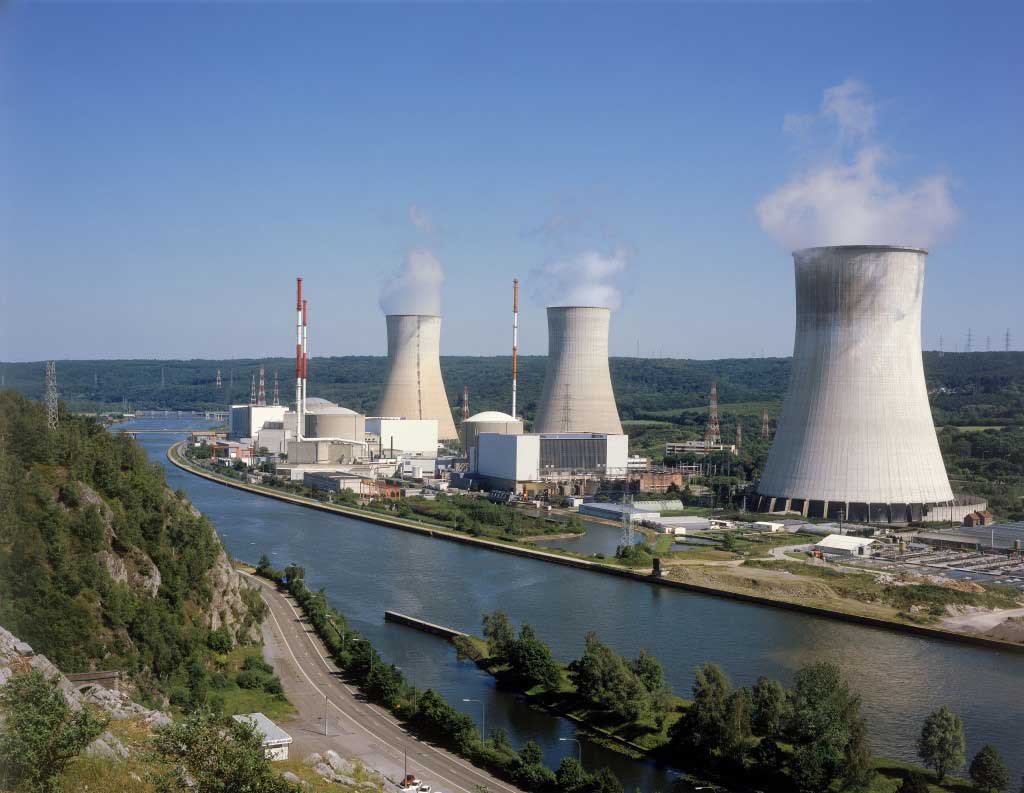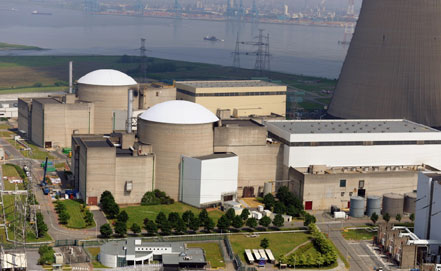Belgian Doel-3 and Tihange-2 Back in the News

Tihange Nuclear Plant, Belgium. Courtesy Electrabel.
The years-long saga surrounding the reactor pressure vessels at the Doel-3 nuclear power plant and Tihange-2 NPP in Belgium has taken another turn, pushing these units back into the broader news cycle and renewing calls from some (uninformed) quarters for further worldwide action and/or permanent shutdowns.
The saga began in mid-2012 when Electrabel, owner-operator of Belgian nuclear plants, discovered anomalies in the reactor vessel of Doel-3 while using a new ultrasonic examination method (originally devised to assess the quality of welding the cladding to the pressure vessel, but which had apparently detected underlying flaws in the pressure vessel itself.) This led to a flurry of examinations both materially and archivally worldwide as various regulators and owners looked into the metallurgical records for pressure vessels manufactured in part or in whole by the long-defunct Rotterdam Dockyard concern. The eventual result in the United States was the determination that only nine nuclear plants had either sections or whole vessels made by Rotterdam, and that records and present analysis were quite sufficient to ensure that no integrity, and thus safety, issues existed. (See link in text above for extensive detail on this, previously on ANS Nuclear Cafe by this author.) These results were essentially duplicated worldwide with the exception of course of Doel-3 and eventually Tihange-2. Electrabel was required to submit a restart plan to Belgium's FANC (Federal Agency for Nuclear Control).

Reactor vessel of the type used at Doel-3, Tihange-2. Barrel or body section comprised of forged rings, welded together to form vessel. Inclusion of hydrogen during manufacture produces localized high pressure areas that crack circumferentially, which are called "flakes." Now, irradiation damage coupled with these inclusions is thought to be causing more rapid vessel embrittlement than predicted. Illustration courtesy FANC.
After some extensive analysis, FANC allowed Electrabel to restart these two units in May 2013, but provided a number of longer-term requirements that Electrabel would have to meet in order to keep the units in service.
Unfortunately for Electrabel, in August 2014 a number of reactor vessel steel samples that had been irradiated for testing were actually destructively tested, and showed a marked decrease in their mechanical properties-in a word, embrittlement, or for a more general term, a weakening under some extreme conditions. While the plants had been operating with much more restrictive heatup and cooldown rates for the reactor vessels (to reduce stress on them) the decision was made to shut both down immediately in a case of extreme prudence, in expectation of further analytical result.
The call for another session by FANC's consultant panel on reactor pressure vessel issues has, however, led to a re-igniting of the issue in the press and a further call to action by FANC's director. This worldwide analysis of vessels has been done before, as was detailed in a previous article on ANS Nuclear Cafe, but it may be that FANC would like to doubly assure its conviction that material properties of hydrogen flaked pressure vessel steels of the type and composition used in Doel-3 and Tihange-2 might be degrading more quickly under irradiation than previously assumed. (This, however, essentially ignores many years' worth of study in the United States and in Russia concerning pressure vessel welds, defects, and embrittlement conducted by national labs as well as the Atomic Energy Commission [now the Nuclear Regulatory Commission] and which is a condition that is continuously monitored and evaluated.) This "call to action" by FANC as a matter of prudence has unfortunately been picked up by such 'advocates' as Greenpeace, which is calling for extreme actions in the name of safety, without apparently understanding the deep pool of knowledge existing in this field.

Doel Nuclear Power Plant. Courtesy Electrabel.
For now, the path forward for these two units is far less clear than it is for any other units worldwide that have part or whole vessels manufactured by Rotterdam Dockyard. Globally, operators have already conducted examinations sufficient to ensure integrity of these vessels in the near term. WENRA (Western European Nuclear Regulators Association) also completed in December 2014 the first phase of a Europe-wide analysis and feedback on the integrity of reactor vessels of plants of any type or origin using forged ring type vessels, and this investigation and feedback process continues. (Vessels fabricated from plates, which typically are large boiling water reactor vessels, are not as prone to hydrogen inclusion driven flaking due to the smaller size of the original ingots and due to the rolling process deforming the material, according to WENRA.)
For Doel-3 and Tihange-2, the spotlight is on; it is impossible to predict that these units have any percentage of chance of restarting if FANC's expert panel finds that the reduction in strength of the irradiated samples (and thus by association the vessels installed in the plants) is increasing at a rate that puts the absolute operational limits for these vessels' lives in any sort of near time frame.
For more information:
___________________________________________________
 Will Davis is Communications Director, historian, newsletter editor and board member for the N/S Savannah Association, Inc. He is a consultant to the Global America Business Institute, a contributing author for Fuel Cycle Week, and writes his own popular blog Atomic Power Review. Davis is also a consultant and writer for the American Nuclear Society, and serves on the ANS Communications Committee. He is a former US Navy reactor operator, qualified on S8G and S5W plants.
Will Davis is Communications Director, historian, newsletter editor and board member for the N/S Savannah Association, Inc. He is a consultant to the Global America Business Institute, a contributing author for Fuel Cycle Week, and writes his own popular blog Atomic Power Review. Davis is also a consultant and writer for the American Nuclear Society, and serves on the ANS Communications Committee. He is a former US Navy reactor operator, qualified on S8G and S5W plants.





.jpg)




